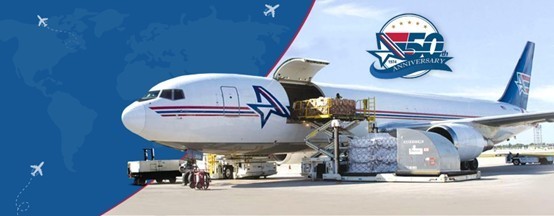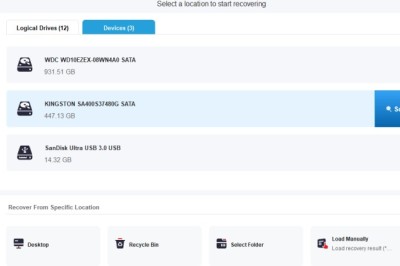views

When you order something online and it shows up in just a few days, even when it’s coming from halfway across the world, there’s a good chance air cargo had something to do with it. Air cargo shipping is simply the process of transporting goods by airplanes, and it plays a huge role in today’s global trade. From fresh flowers flown in from Holland to electronics shipped from Asia, air freight is what keeps supply chains moving quickly.
But while it sounds straightforward, load goods onto a plane and fly them across the globe, air cargo shipping is much more complex than it appears. Let’s break it down in simple terms: what it is, why businesses use it, the challenges it faces, and where the industry is headed.
What is Air Cargo Shipping?
At its core, air cargo shipping means moving goods via airplanes instead of ships, trucks, or trains. This can involve:
- Dedicated cargo planes (like FedEx, UPS, or DHL jets) that carry only freight.
- Passenger flights where goods are placed in the belly of the aircraft, alongside your suitcases.
Air cargo can move just about anything, including perishables like seafood and fruit, fashion and luxury goods, medical supplies, electronics, and even live animals. The main reason businesses turn to air shipping? Speed.
A container ship from China to Canada can take three to four weeks. An air cargo flight can do it in less than two days. That time difference is often the dealbreaker for companies.
Benefits of Air Cargo Shipping
So, why do businesses spend more money to send goods by air when ships and trucks are much cheaper? Here are some key benefits:
Speed Like No Other
One of the major perks is SPEED. At times, there is a need for urgent deliveries of medicines, medical equipment, spare parts, or time-sensitive goods, this is when air cargo becomes the fastest option. A package can leave one continent and arrive on another within 24–48 hours.
Reliable Schedules
There’s one thing about airlines – they usually stick to fixed schedules. Unlike ocean freight, which can get a bit delayed due to port strikes, congestion, or weather, flights tend to depart and arrive on time. This reliability is what gives businesses more control over inventory and planning.
Global Reach
Did you know? Air cargo is known for connecting almost every corner of the world. Even those landlocked countries where there are no seaports can receive goods easily through airports. So, what does this mean for businesses? It’s simple – reaching customers in more places without geography limitations.
Safety and Security
Airports have strict security measures, making theft or damage less likely compared to other modes of transport. Fragile or high-value items, like electronics, jewelry, or pharmaceuticals, are safer when shipped by air.
Smaller Storage Needs
Since goods arrive quickly, businesses don’t need to maintain large warehouses for stockpiling. This reduces inventory costs and allows companies to operate on leaner supply chains.
Challenges of Air Cargo Shipping
Of course, air freight isn’t perfect. It comes with its own set of hurdles:
High Costs
Price is the biggest downside. Air cargo is much more expensive than ocean shipping, making it only efficient for urgent orders. This is why businesses reserve it for high-value shipments.
Limited Capacity
Cargo ships can carry a lot of things, but airplanes have limited capacity. Think of it in this way – a single container ship is able to hold 1000s of containers, but a plane can only hold a few hundred tons. Due to this limit, the volume of goods that can be shipped at once gets restricted.
Weather Disruptions
Flights are much more reliable than ships. Unfortunately, they can still face delays due to fog, storms, or natural disasters. It just takes one bad weather day at airports to ground planes and throw off schedules.
Handling Restrictions
Not everything can be shipped by air. Hazardous materials, oversized machinery, and bulky cargo may be restricted or extremely costly to move. Businesses must carefully check what’s allowed.
Trends Shaping the Future of Air Cargo
The E-Commerce Boom
Online shopping is here to stay, and it’s not slowing down anytime soon. With customers expecting their orders to arrive in just a day or two, retailers are increasingly turning to air shipping, especially for items like electronics, fashion, and everyday essentials. Simply put, the quicker we want our packages, the busier the skies become.
Smarter Tracking and Digital Tools
The age-old question of “where’s my package?” is becoming much easier to answer. Airlines and logistics companies are introducing technology that allows you to track your shipment in real time. Plus, innovations like AI and blockchain are being explored to streamline paperwork and customs processes, helping to reduce delays.
A Push for Greener Solutions
Air cargo has a significant environmental impact, and the industry is well aware of it. That’s why you’ll see initiatives involving biofuels, carbon offset programs, and the development of new, fuel-efficient aircraft. Some companies are even experimenting with drones and hybrid planes for shorter routes to promote sustainability.
Growing Need for Cold Chain Logistics
Not everything that takes to the skies is just a simple box. Consider vaccines, seafood, or fresh flowers—these items require strict temperature control, known as “cold chain” logistics. The demand for this service is on the rise, prompting airlines to invest in advanced refrigeration systems and storage solutions to keep these products fresh and secure.
Competition from Land and Sea
Air cargo is undeniably fast, but ships and trains are stepping up their game too. With faster sea routes, high-tech ports, and integrated transport options, businesses now have more choices than ever. To stay competitive, air freight must continue to innovate and adapt.
Learning to Be Resilient
The pandemic taught the industry a crucial lesson: flexibility is key. When passenger flights came to a halt, cargo space became limited. Airlines got creative, converting passenger planes into temporary freighters to keep goods moving. This adaptability demonstrated that air cargo can recover even in the face of major disruptions, and that resilient spirit is likely to endure in the future.
When Should Businesses Use Air Cargo?
As the air cargo cost is high, businesses should weigh their options. So, only consider it when -
- The goods are time-sensitive (like medical supplies or spare parts).
- The products are high-value and small in volume (like electronics or luxury goods).
- The destination is remote or landlocked, where other transport modes aren’t practical.
- Seasonal demand spikes require fast restocking (like fashion during holiday sales).
For bulk shipments of low-value goods, ocean or rail transport is still the smarter option. Many companies even work with a Cargo Shipping Company that helps them decide which mix of shipping methods makes the most financial and operational sense.
To Bring it All Together
Air cargo shipping is like the fast lane for shipping. It can move goods across the world in just days, which is why it’s so important for online shopping. Sure, it costs more and isn’t the most eco-friendly, but when speed matters, nothing beats it.
Businesses use it smartly, mixing it with sea or road shipping depending on what they need. So, if your package shows up from another country in just two days, that’s the magic of International Air Shipping.























Comments
0 comment